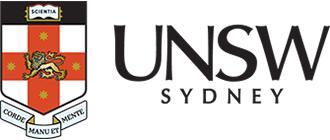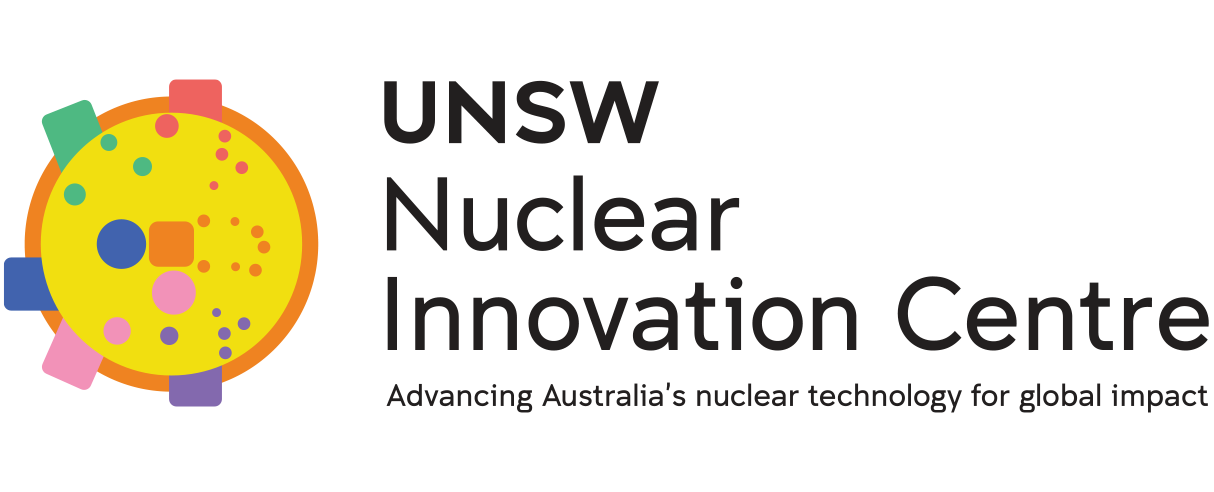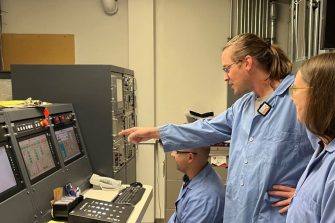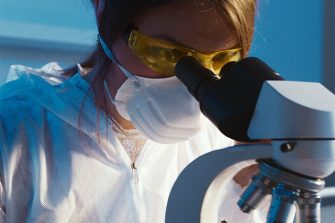Student experience

- Visit to Universities
- Conference presentations
- Industry engagement
Visit to Universities
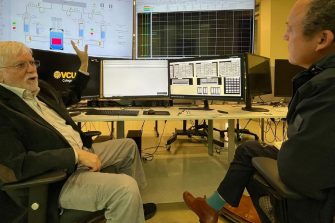
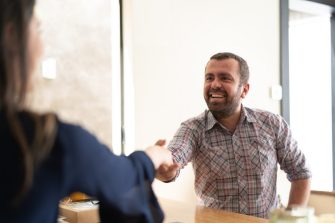
Visit to MIT to discuss potential future collaborations
In June 2024, Dr Matthew Brand visited MIT to discuss potential future collaborations. In particular, he met with Professor Mike Short, who later examined his PhD thesis. During the visit, they began planning experiments to be conducted at MIT to validate the theories developed in his research. He was also given a tour of MIT’s extensive facilities, giving him invaluable insights for designing future experiments.
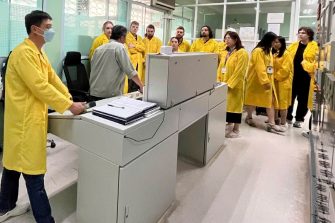
Visit to the Nuclear Reactor at Dalat Nuclear Research Institute
Ten bachelor’s degree students from the Medical Radiation Physics department at the University of Wollongong (led by Professor Anatoly Rozenfeld and Dr Linh Tran) visited the Nuclear Reactor at Dalat Nuclear Research Institute in Vietnam, to get hands-on experience in nuclear reactor technology, nuclear medicine and proton therapy. The December 2024 trip was funded by the Government’s New Colombo Plan program.

Visit to the proton therapy facility at the National Cancer Centre
Undergraduate students (rigth) from both the Bachelor of Medical Radiation Physics and the Bachelor of Science degrees at the University of Wollongong visited the proton therapy facility at the National Cancer Centre, Singapore, in December 2024.

Visit to the CROCUS nuclear research reactor
Tina Baradaran (left) visited the CROCUS nuclear research reactor at the École Polytechnique Fédérale de Lausanne (EPFL) in Switzerland, which has been offering hands-on teaching experiences to nuclear engineering students since 1983. The zero-power reactor has been a valuable educational tool for more than 40 years. Tina had the rare opportunity to tour the facility, fulfilling a long-held dream. She likened the experience to exploring an underground Swiss bank vault, with the reactor as the “treasure”.
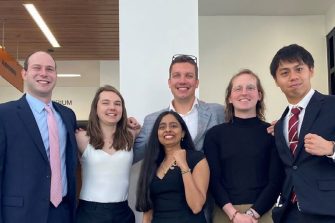
Conference presentations
-
Established in 2012 in association with the Journal of Nuclear Materials, the Nuclear Materials Conference (NuMat) serves as an umbrella for international meetings on nuclear materials science related to fission and fusion reactors and the overall nuclear fuel cycle.
Dr Matthew Brand did a flash talk and poster presentation on work conducted in partnership with Tokamak Energy, titled ‘Material selection charts for the shielding of critical components’. He was able to make new connections with leading researchers and discuss the ongoing work with colleagues from Imperial College London, University of Birmingham, Tokamak Energy and MIT.
Dr Samaneh Setayandeh’s oral presentation on ‘ε-Phase of Tungsten Boride’ led to potential collaborations with Imperial College London and Oak Ridge National Laboratory. Her poster on ‘Dielectric Properties of β-Ga2O3’ opened doors for future collaboration with the Air Force Research Laboratory.
PhD candidate Melody Ranger presented posters on UN Simfuel thermal expansion and UB2 fission product. This led to a collaboration with Denise Adorno Lopes from Oak Ridge National Laboratory, who is developing a machine-learning potential that can predict the chemical state of fission products in new fuels, and who can use Melody’s data to validate her model.
PhD candidate Sercan Cetinkaya presented a poster on ‘Oxidation resistance of WB2-x in air and steam from in situ neutron diffraction’. He had valuable discussions with academics from Imperial College London about the epsilon phase of WB, and also connected with ASTAR researchers who expressed interest in experimental collaborations. Sercan also discussed a potential partnership with Oak Ridge National Laboratory.
Attending his first international conference, PhD candidate Harvey Ling presented a poster on his work with the gap conductance rig. He engaged with the global nuclear materials community and gained ideas for potential directions in his work.
-
The eighth conference of the Combined Australian Materials Societies brought together experts and practitioners from various domains, emphasising innovation, sustainability and practical applications.
Lucy Chen presented her recent PhD research, ‘Hydrogen trapping of β phase in two-phase titanium alloys’, broadening her understanding of current research and making new connections.
PhD candidate Harvey Ling presented a poster on his work with a gap conductance rig and gained knowledge at sessions such as how to use time-resolved X-ray imaging techniques for different materials and how to utilise neutron diffraction for residual stress measurements.
PhD candidate Sercan Cetinkaya gave an oral presentation on ‘Revisiting the composition and crystal structure of WB2−x using neutron diffraction’ and found new insights in materials design and fabrication for harsh conditions.
PhD candidate Abid Hossain Khan shared the novel methodology adopted in his research with materials science and engineering experts, and received feedback and opportunities for collaboration.
UNSW Associate Lecturer Dr Matthew Brand talked about the research he did for his PhD, in a presentation titled ‘Material selection charts for radiation shielding in extreme environments’. He provided visibility to the work he is doing at UNSW and generated discussion and interest in the topic.
-
The conference of COmputer Simulation of IRradiation Effects in Solids (COSIRES) is a leading venue for presenting and discussing advances in the computational investigation of materials phenomena caused or influenced by all forms of irradiation. In 2024, it was held in Kingston, Ontario.
PhD candidate Abid Hossain Khan presented a poster titled ‘Machine-Learning Interatomic Potentials for Hydrogen-Defect Interactions in Zirconium’. He joined the Computational Materials Physics research group as a visiting research student under the supervision of Professor Laurent Karim Béland, gaining invaluable knowledge and skills to design and conduct his PhD research efficiently.
Dr Matthew Brand delivered an oral presentation on his PhD research, receiving valuable feedback and ideas about how his work could be improved and applied in new, relevant directions.
Industry engagement
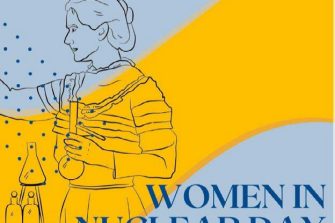
Women in Nuclear Day
The Centre sponsored the first-ever Women in Nuclear (WiN) Day event at UNSW, showcasing the exciting world of nuclear science and the incredible careers and opportunities in the field. The November 2024 event included speakers Tina Baradaran, Dr Jo Lackenby, Dr Sheruna Naidoo, Ashley Schneider, Dr Jennifer Stansby, Kirsty Braybon, Professor Maria Rost Rublee, Helen Cook, Dr Cathy Moloney and Jasmin Diab.
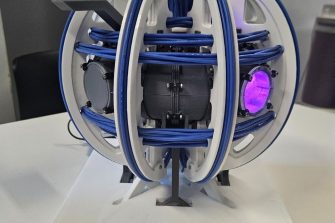
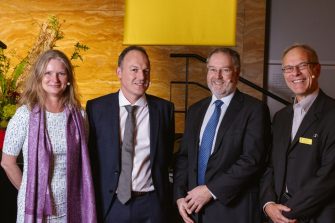
Engineering the Future: Navigating a Nuclear Tomorrow
This expert panel discussion held in February 2025 explored the future of nuclear innovation in Australia, addressing the transformations and adaptations the country may soon see. The panel featured Dr Cindy Vestergaard, Sir Robin Grimes and Professor Ian McGill, and was facilitated by Associate Professor Edward Obbard.
Explore
